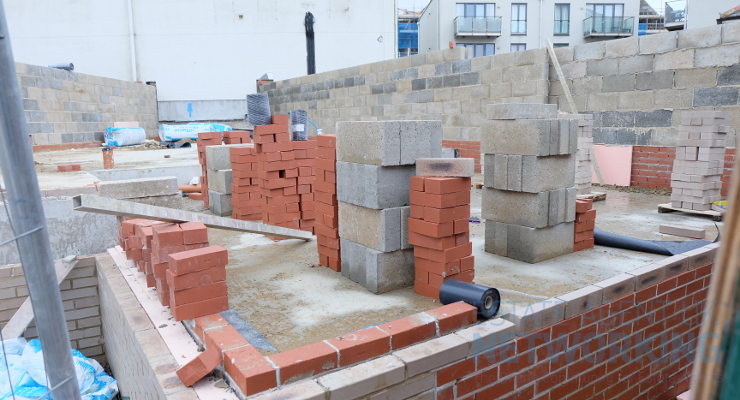Construction Sector Recovery Slows Pace, Yet Remains Steady
- Construction starts grew 9% both in the three months to July and compared with last year.
- Residential work starting on-site was 10% up against the previous three months and grew 25% on a year ago.
- Although non-residential starts grew 7% on a quarterly basis, they slipped back 1% year-on-year.
- Civil engineering project starts fell 21% compared with the 2024 numbers, but were 15% up on the previous quarter.
Today, Glenigan | Powered by Hubexo, one of the construction industry’s leading insight experts, releases the August 2025 edition of its Construction Index.
The Index focuses on the three months to the end of July 2025, covering all underlying projects, with a total value of £100m or less (unless otherwise indicated), with figures seasonally adjusted.
It’s a report which provides a detailed and comprehensive analysis of year-on-year construction data, giving built environment professionals a unique insight into sector performance over the last 12 months.
The August Index, whilst registering a more modest increase than the July edition, is indicative of a sector which is steadily recovering lost ground. Start on site performance rose by 9% on both a quarter-by-quarter basis and compared to last year.

This continued season in the sun was predominantly influenced by a consistent month-on-month increase in residential construction activity, where project starts surpassed the previous three months by 10%, up by a quarter (25%) against 2025 results.
Whilst Non-residential construction starts rose 7% when measured against the preceding three months, they were down 1% on the previous year; however, this small blip wasn’t enough to resist the overall rise recorded.
Commenting on the August Index, Allan Wilen, Glenigan’s Economic Director, says, “The industry will find much to be pleased about in the August Index. Despite not seeing the dramatic rises we witnessed in July, the general picture is a positive one, particularly in the residential sector, which is experiencing a spell of significantly increased activity. When taken in conjunction with the spike in commercial office starts, it suggests that private investment is returning to the market, despite persistent geopolitical uncertainty. Whilst other areas of non-residential saw mixed performance, with the exception of healthcare, more funding for energy infrastructure and water upgrades should help to lift starts in the second half of the year.”
He continues, “Looking at the bigger picture, these figures support the predictions made in Glenigan’s Spring/Summer Forecast 2025, which expects the industry to grow by 3% by the end of the year, suggesting recovery is, at long last, stepping up a gear.”
Sector Analysis – Residential
The residential sector was, once more, the standout performer. However, this growth (highlighted above) was solely driven by Private Housing, with starts 24% up on the previous three months, to stand 40% higher than 2024 levels. Social housing, on the other hand, which posted an increase in July’s Index, declined 33% in comparison to the preceding quarter and 24% on a year ago.
Sector analysis – Non-residential
Performance in the non-residential sectors was inconsistent.
Office starts had a strong performance, having increased 39% in the three months to July, standing 64% up on a year ago. A key contribution factor for this impressive figure was ‘The Republic’ office development, a key part of Manchester’s Mayfield scheme, worth £98.8 million.
Health projects also resurged, with projects starting on site grew 11% quarter-on-quarter to stand 20% higher than 2024 figures.
While growth in hotel & leisure was more modest, it also experienced a strong period, with construction starts 2% up on the previous three months and 9% higher than last year.
Education continues to struggle, despite growing 6% against the previous three months, which wasn’t enough to put the sector above 2024 levels.
Finally, civil engineering work starting on-site increased 15% compared to the preceding three months but decreased 21% to the previous year. Infrastructure drove growth, rising sharply by 27%, in contrast to the more modest 1% increase in utility starts. Whilst these results are not at the levels expected post Spending Review, they highlight that pace is gradually picking up in these verticals, with the promise of more work later in Q.3 and into Q.4 2025.
Regional Performance
Regional performance was strong in the three months to July; however, the picture was mixed compared with last year.
The West Midlands was the standout performer, rising 40% against the preceding three months to stand 79% up on the previous year. The South East also did well during the Index period, leading in value terms, growing by over a fifth (+22%) against the previous three months and 9% on a year ago. Likewise, The North West also posted strong results, with a 27% quarterly increase to stand 18% higher than last year.
Not to be outdone, the East of England also saw an uplift, rising 16% against the preceding three months and 47% year-on-year, and Yorkshire registered a 10% increase compared with the previous quarter and stood 12% up on last year’s levels.
Whilst London rose 13% against the preceding three months, it finished 10% down against the previous year. Similarly, performance was mixed in Northern Ireland, with the remaining regions experiencing a weak period both year-on-year and quarter-on-quarter.









